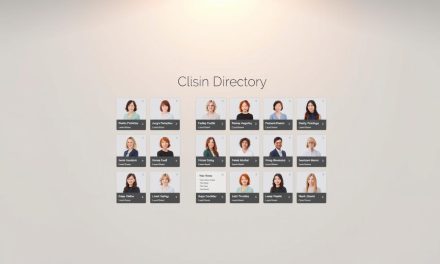In today’s competitive marketplace, your customers have more choices than ever before. They expect exceptional service and personalized experiences as standard requirements. The Zendesk Customer Experience Trends Report 2025 reveals that nearly two-thirds of consumers now expect more personalized service with AI.
Customer happiness directly impacts your business growth. When you meet or exceed expectations, people stay loyal and recommend your company to others. Zendesk Benchmark data shows that 80 percent of customers expect support representatives to assist them with everything they need.
Modern businesses must balance emerging technologies with evolving customer demands. AI and personalization are no longer premium features but essential components of successful service. Achieving consistent excellence requires putting the customer first at every touchpoint.
Expert guidance from professional service providers like Umalis (https://en.umalis.fr/) can help navigate this complex landscape. They provide the strategic support needed to implement effective customer satisfaction strategies that deliver measurable results.
Table of Contents
Key Takeaways
- Today’s customers expect highly personalized service and AI-enhanced experiences
- Meeting customer expectations leads to loyalty and positive word-of-mouth
- 80% of customers want comprehensive support from service representatives
- Customer satisfaction is an ongoing process requiring continuous optimization
- Professional guidance can help implement effective satisfaction strategies
- Satisfied customers spend more and stay longer with your business
- Personalization and AI are now standard requirements, not premium features
Understanding the Importance of Client Satisfaction
The financial health of your business is directly tied to how your customers feel about their interactions with you. Positive experiences create a powerful foundation for growth and stability.
Why Customer Satisfaction Drives Business Success
Happy customers are profitable customers. Research from Zendesk confirms that 3 in 4 consumers will spend more with companies that provide a good experience.
Conversely, negative experiences drive customers away rapidly. Over half will switch to a competitor after just one bad interaction.
McKinsey research reinforces this, showing that improving customer satisfaction simultaneously decreases service costs and increases revenue. This creates a powerful double benefit for your bottom line.
| Business Metric | High Satisfaction Impact | Low Satisfaction Impact |
|---|---|---|
| Customer Spending | 75% spend more | 73% switch after multiple bad experiences |
| Operational Cost | Decreases over time | Increases due to churn |
| Revenue Growth | Increases steadily | Stagnates or declines |
The Role of Client Satisfaction in Building Loyalty
Loyalty goes beyond repeat purchases. It creates customers with a positive emotional connection to your brand. These loyal customers demonstrate less price sensitivity and higher conversion rates.
They become brand evangelists. The Word of Mouth Marketing Association estimates that positive reviews and recommendations account for 13% of consumer sales, representing $6 trillion in annual spending.
This organic advocacy attracts new business at a fraction of the cost of traditional marketing. Building this loyalty is an investment that pays continuous dividends.
Defining Customer Needs and Expectations
Successful customer relationships begin with a deep understanding of what your audience truly requires. This understanding forms the bedrock of any effective strategy. Essentially, customer satisfaction is the measurable gap between their expectations and the actual service they receive.
Identifying Key Customer Pain Points
To bridge this gap, you must first identify friction points. Become a dedicated student of your customer feedback. Analyze support tickets, reviews, and survey responses meticulously.
This process reveals the specific issues that cause frustration. Conducting interviews or focus groups can uncover deeper needs that drive decisions. This research is crucial for building accurate customer profiles.
Aligning Service Levels with Expectations
With clear insights, you can align your operations. Zendesk data confirms that 80% of customers expect support reps to handle all their needs. Your business must meet this standard.
Document expectations at each journey stage. This ensures your delivery consistently matches or exceeds benchmarks. For a deeper dive, explore our comprehensive guide to customer needs analysis.
| Customer Expectation | Aligned Service Action | Business Outcome |
|---|---|---|
| Quick Resolution | Implement efficient ticketing systems | Higher retention rates |
| Personalized Interaction | Use CRM data for context | Increased customer spending |
| Omnichannel Support | Unify communication platforms | Improved overall satisfaction |
Remember, this is not a one-time task. Customer expectations evolve, requiring continuous monitoring and adjustment to maintain high levels of satisfaction.
Mapping the Customer Journey for Better Outcomes
Understanding how people truly navigate your business ecosystem provides the foundation for exceptional service. This approach transforms abstract interactions into actionable intelligence.
Visualizing Touchpoints Across the Journey
Customer journey mapping reveals every point where people engage with your brand. From initial website visits to final purchases, each interaction tells a story.
Creating comprehensive maps documents the complete experience. You’ll see how customers move through awareness, consideration, and decision stages. This visualization highlights critical moments that shape perceptions.
Identifying Friction Points Using Analytics
Modern analytics tools uncover hidden obstacles in the customer journey. Session replay technology shows real user behavior patterns.
Watch for warning signs like rage-clicking or abandoned carts. These indicate serious frustration points requiring immediate attention. The data reveals where people struggle with navigation or information finding.
This analytical approach goes beyond simple mapping. It provides qualitative insights about emotions and motivations. For deeper understanding of service quality measurement, explore our comprehensive resources.
Document these insights and share them across teams. Everyone gains clarity on how their work impacts the overall customer experience.
Leveraging Feedback for Continuous Improvement
Your customers constantly provide valuable insights through their interactions with your business. This ongoing feedback represents one of your most powerful tools for organizational growth.
We help you establish systems that capture both direct and indirect customer input. This creates a comprehensive understanding of customer sentiment across all touchpoints.
Collecting Unsolicited and Direct Customer Feedback
Direct feedback comes from surveys and interviews you initiate. Indirect feedback appears spontaneously in reviews and support tickets.
Unsolicited customer feedback often reveals the most authentic concerns. People share what truly matters to them without prompting.
Place feedback widgets on key pages and monitor social conversations. This captures real-time reactions throughout the customer journey.
Analyzing Trends to Uncover Opportunities
Look beyond individual comments to identify patterns in your feedback data. Recurring themes indicate systemic issues or opportunities.
Even negative comments provide crucial improvement directions. They highlight exactly where expectations weren’t met.
Regular analysis helps you respond quickly to emerging customer needs. This proactive approach demonstrates your commitment to their experience.
Implementing Tools to Measure Satisfaction>
Quantifying the customer experience transforms subjective feelings into actionable business intelligence. We guide you in selecting the right tools to measure customer satisfaction effectively. These systems provide the data needed for informed decisions.
Establishing a clear measurement framework is your first step toward continuous improvement.
Using CSAT, NPS, and CES for Real-Time Insights
The three primary metrics offer complementary views. The Customer Satisfaction Score (CSAT) gives immediate feedback on specific interactions.
You calculate CSAT with a simple formula: (number of satisfied customers ÷ total number of responses) x 100. A post-interaction survey asking « How satisfied are you? » provides the raw data.
The Net Promoter Score (NPS) measures loyalty. It asks, « How likely are you to recommend us? » on a 0-10 scale. Follow-up questions uncover the reasons behind the scores.
Meanwhile, the Customer Effort Score (CES) assesses friction. It asks how easy it was to complete a task. Together, these satisfaction scores paint a complete picture.
Real-time access to these scores lets you identify and fix issues swiftly. This prevents small problems from affecting larger customer segments.
Integrating Surveys and Automated Feedback Systems
Strategic survey placement maximizes response rates and minimizes fatigue. Timing is critical—request feedback right after key interactions.
Automated systems trigger survey requests based on specific customer actions. This ensures you capture feedback at the most relevant moments.
These integrated tools provide a steady stream of insights. You gain a dynamic understanding of how your efforts to measure customer satisfaction are performing over time.
Enhancing Customer Service with Technology
Modern technology now offers powerful solutions to elevate your customer service delivery. Artificial intelligence is no longer a futuristic concept but a core component of modern support.
According to the Customer Experience Trends Report 2025, 81 percent of consumers believe AI is part of standard service. This shows that investing in these tools is essential to meet expectations.
Utilizing AI and Chatbots for Instant Support
Advanced AI agents handle interactions from start to finish. They can process refunds, give order updates, and resolve basic technical issues.
This provides your customers with instant, helpful support any time of day. It eliminates wait time and delivers consistent quality.
Zendesk Benchmark data finds that nearly two-thirds of CX leaders struggle to deliver the instant experiences customers expect. AI directly addresses this gap.
For complex issues, a hybrid approach works best. The AI agent routes the customer to a human agent with full context. This minimizes frustration from repetition.
| Support Channel | Best For | AI Enhancement |
|---|---|---|
| Live Chat | Quick questions | AI-powered suggestions for agents |
| Chatbots | 24/7 instant support | Autonomous issue resolution |
| Social Media | Public inquiries | Automated response & routing |
Multi-channel support lets customers reach you on their preferred platforms. AI tools can also assist human agents by summarizing requests.
This investment in customer service technology is crucial for achieving high levels of customer satisfaction. It meets the demand for instant, personalized help.
Strategies for Improving Client Satisfaction
Effective customer satisfaction improvement starts with recognizing that personalization has become the new standard. Nearly two-thirds of consumers now expect service tailored to their specific needs, often enhanced by AI capabilities.
Personalizing Interactions for Unique Customer Needs
Develop detailed customer profiles using demographics, behavior patterns, and purchase history. This enables you to create segments for tailored experiences.
Provide agents with comprehensive customer context during interactions. Include previous issues, customer tenure, and product history. This allows them to anticipate needs without requiring customers to repeat information.
Automate messaging to align with individual journey stages. Use email campaigns that introduce new customers to relevant content like product videos. AI can monitor browsing behavior to make personalized recommendations.
Additional improvement strategies include empowering employees to make appropriate policy exceptions. Provide ongoing training to develop agent skills. Create comprehensive self-service options for independent problem-solving.
Proactive service anticipates issues before customers encounter problems. Alert customers about service disruptions or add resources before product updates.
Improving customer satisfaction requires a holistic approach. Combine personalization, employee empowerment, and technology investment. Maintain genuine commitment to putting customer needs first in every decision.
Measuring and Achieving « Client Satisfaction » in Practice
Translating satisfaction data into business improvements demands a systematic measurement process. This approach transforms abstract goals into concrete achievements your team can pursue effectively.
Setting Benchmarks and KPIs for Success
Establish clear performance indicators that provide direction for your team. Meaningful benchmarks come from three sources: improving past scores, competitor comparison, and industry standards.
DashThis demonstrates this perfectly. They achieved a 140% increase in customer satisfaction by identifying onboarding friction through user feedback. Simple changes to button placement and added guidance elements created dramatic results.
| Benchmark Type | Measurement Approach | Strategic Value |
|---|---|---|
| Internal Improvement | Compare current scores to past performance | Tracks progress over time |
| Competitive Analysis | Measure against direct competitors | Identifies market position |
| Industry Standards | Align with customer expectation benchmarks | Ensures market relevance |
Adapting Strategies Based on Performance Data
Turum-burum increased their client’s revenue per user by 11.46% using exit-intent surveys. They discovered checkout malfunctions caused nearly half of abandonments.
By fixing the checkout experience, they decreased bounce rates by 13.35%. This shows how performance data drives effective strategy adjustments.
Create a continuous improvement cycle with regular data gathering. Empower your team to take action based on insights. Share findings across departments to coordinate efforts.
Conclusion
Achieving sustainable business growth hinges on your ability to consistently meet evolving customer expectations. This requires a comprehensive approach that integrates measurement, strategy, and technology with genuine commitment to understanding customer needs.
The strategies we’ve explored work best as an interconnected system rather than isolated tactics. Customer satisfaction represents an ongoing journey, not a final destination, demanding continuous adaptation as expectations shift.
The business benefits are substantial—increased revenue, reduced churn, and organic growth through positive word-of-mouth. We encourage starting with the most relevant strategies for your situation and expanding efforts as results emerge.
Partnering with experienced professionals like Umalis (https://en.umalis.fr/) can accelerate your progress through expert guidance and proven methodologies. Begin by measuring your current satisfaction levels and identifying high-impact improvement opportunities to create exceptional experiences that drive loyalty and success.
FAQ
Why is customer feedback so important for my business?
Customer feedback provides direct insight into how your audience perceives your brand and services. It helps you understand their needs, identify pain points, and make informed decisions to improve their overall experience. This data is essential for driving loyalty and increasing revenue.
What are the best tools to measure customer loyalty?
Key tools include the Net Promoter Score (NPS) to gauge loyalty, Customer Satisfaction (CSAT) scores for specific interactions, and Customer Effort Score (CES) to measure ease of use. Integrating automated survey systems can provide real-time insights for your team.
How can I improve the customer journey for better outcomes?
Start by mapping every touchpoint a customer has with your company, from initial marketing contact to post-purchase support. Use analytics to identify friction points and personalize interactions to meet unique needs, ensuring a smooth and positive experience.
What role does technology play in enhancing customer service?
Technology, such as AI-powered chatbots, can provide instant support and resolve common queries quickly. This improves response times and frees up your team to handle more complex issues, leading to higher satisfaction scores.
How often should I review my customer satisfaction strategies?
Regularly review your strategies based on performance data and changing customer expectations. Setting clear benchmarks and KPIs allows you to adapt quickly and ensure your approach remains effective in meeting business goals.




